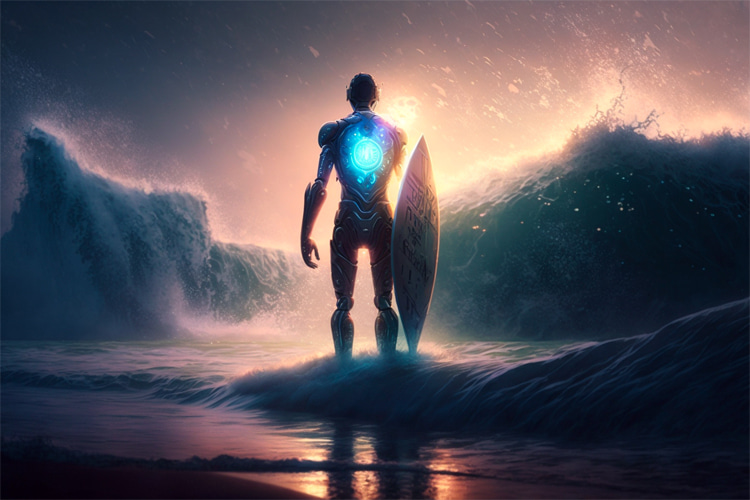As the sun sets over the undulating horizon, casting a golden glow upon the ocean, the waves of technology continue to surge and crash upon the shores of our lives.
One of the latest swells in this ocean of change is the introduction of robots as instructors, teaching humans how to perform multiple tasks.
This phenomenon raises questions about the nature of human-machine interaction, the role of artificial intelligence (AI) in sports, and the future of "traditional" surf instructor jobs.
Could androids replace them in the more or less distant future? What is the role of AI in the modern art of riding waves?
In this essay, we will explore these questions and delve into the opportunities and challenges that robots pose in the world of surfing.
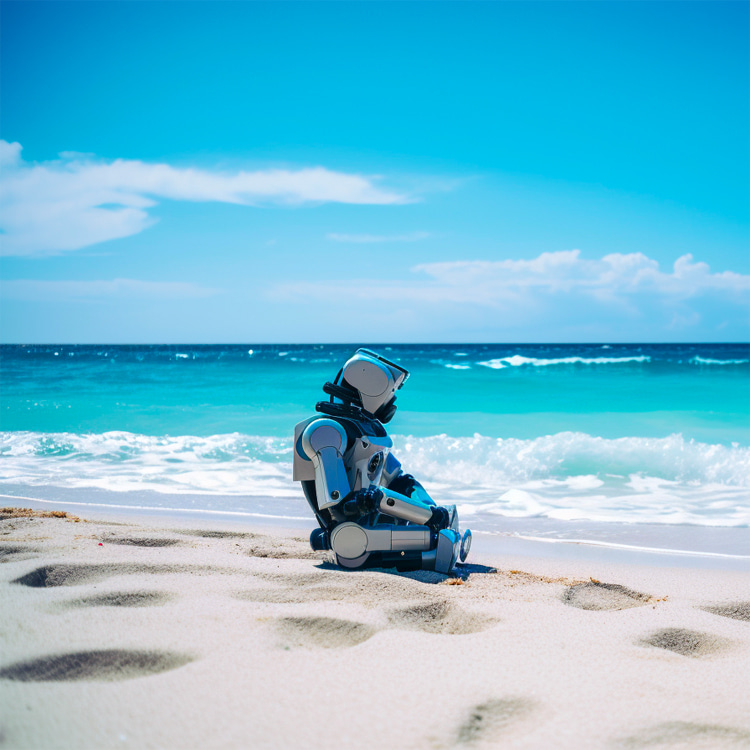
Tidal Forces: AI and the Future of Surf Instruction
The rise of AI-powered robots as surf instructors could cause a ripple effect within the surfing community.
One significant concern is the potential for AI to replace human instructors, leaving them jobless in the wake of technological innovation.
This wave of automation has already swept through various industries, and the question remains: will surf instructors be able to weather the storm?
The answer, however, may not be as clear-cut as it appears.
While robots may eventually automate certain aspects of surf instruction, it is unlikely that they will completely replace human coaches.
Surfing is more than just a series of mechanical techniques; it is an intricate dance between the surfer, the ocean, and the elements.
As such, human trainers bring a wealth of experience, intuition, and empathy to the table that robots may be unable to replicate.
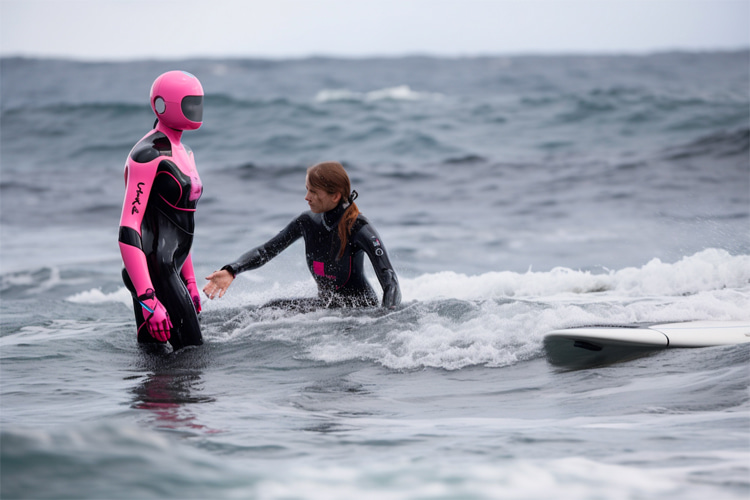
Breaking Barriers: Can Robots Make Us Better Surfers?
Like many other sports, surfing demands a delicate balance of physical skill, mental focus, and an intuitive understanding of the ocean's rhythms.
Can robots truly enhance our ability to surf? The answer may lie in the unique capabilities of AI and robotics.
First, robots can provide precise and consistent feedback on our technique, detecting errors and suggesting real-time improvements.
This level of detail would be difficult for a human instructor to match, allowing surfers to hone their skills more rapidly than ever before.
Second, robots can be programmed to adapt their instruction style to each individual's learning preferences, strengths, and weaknesses.
This personalized approach has the potential to maximize the efficiency and effectiveness of the learning process, enabling surfers to progress at a pace that suits them best.
Lastly, robots can leverage their vast computational power to analyze environmental conditions, such as wave patterns, wind speeds, and ocean currents, to help surfers make better decisions about when and where to catch the perfect wave.
Actually, this is already a reality. In 2022, USA Surfing started working with Microsoft to develop AI-assisted surf training.
So, this fusion of AI-driven analytics and human intuition may ultimately elevate our surfing abilities to new heights.
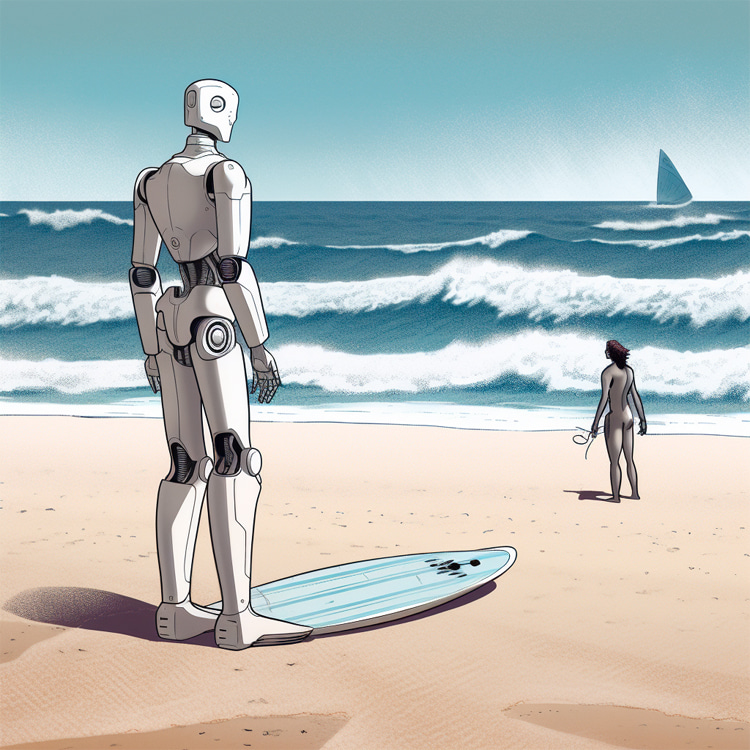
Waves of Wisdom: Human-Robot Collaboration in Surfing
Rather than viewing robots as a threat to human surf instructors, we should consider the possibilities that arise when we embrace a collaborative approach.
By pooling the unique strengths of both humans and robots, we can create a synergistic learning experience that transcends the limitations of either party.
For instance, human coaches can continue to provide the personal touch, fostering camaraderie and imparting the spiritual aspects of surfing that robots may struggle to convey.
Meanwhile, robots can offer their unparalleled precision and adaptability to ensure that surfers receive the most effective technical guidance possible.
Moreover, human tutors can learn from the data and insights generated by AI-powered robots, refining their own teaching methods and deepening their understanding of the sport.
This fusion of human wisdom and robotic efficiency has the potential to create a new generation of surfers, united by their shared passion for riding the waves and empowered by the collective knowledge of both man and machine.
We may like it or dislike it, but it seems inevitable.
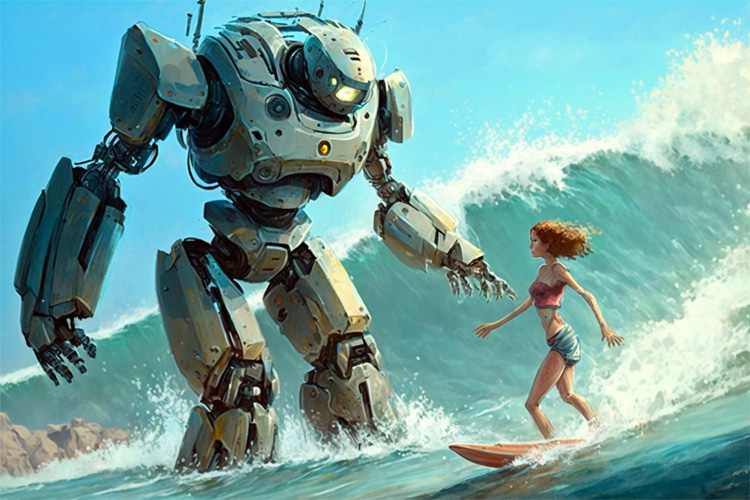
Charting the Course of Our Collective Surfing Odyssey
In conclusion, the prospect of AI-powered robots teaching humans to surf offers a captivating glimpse into the future, as well as an opportunity to reflect on the essence of what it means to be human.
By navigating the uncharted waters of human-robot collaboration, we may discover new ways to enrich our surfing experience and deepen our connection with the ocean.
Rather than fear the tidal wave of technological progress, we should learn to ride it, harnessing its power to create a more inclusive, accessible, and diverse surfing community.
In this brave new world, human surf instructors and AI-powered robots can coexist, complementing each other's strengths and filling in the gaps left by their respective limitations.
Ultimately, the fusion of human intuition, experience, and empathy with the precision, adaptability, and computational prowess of robots has the potential to elevate the art of surfing to new heights.
As we ride this wave of innovation together, we may find ourselves not only becoming better surfers but also more in tune with the ever-changing dance between humanity, technology, and the ocean that connects us all.
The technological tides continue to ebb and flow, and it is up to us to find balance and harmony within them.
As we embrace the unknown and face the challenges of tomorrow, let us remember the wise words of an ancient Hawaiian proverb: "He wa'a he moku; he moku he wa'a."
In English, "The canoe is an island; the island is a canoe."
In this interconnected world, our collective surfing journey depends on our ability to work together, adapt, and ride the waves of change with courage, wisdom, and grace.
Again, you're free to choose whether to embrace it or keep it old school.
Words by Andrew Island | Surfer and Author
